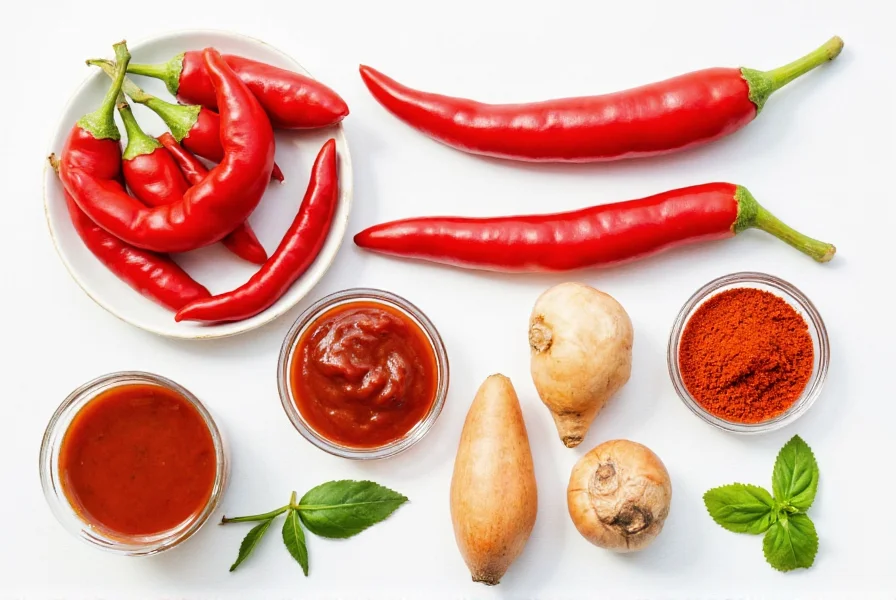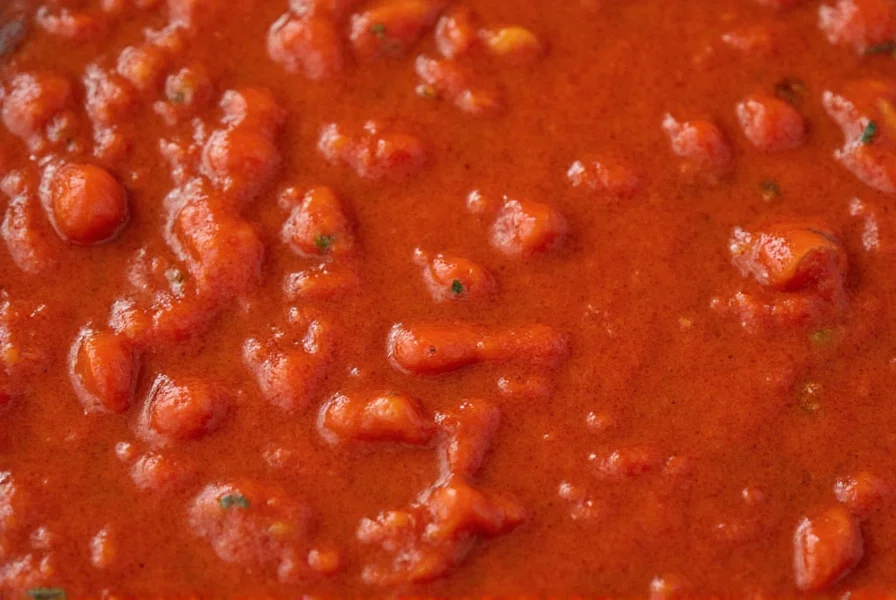Understanding what is chili sauce requires examining its fundamental components and culinary role. This popular condiment transforms dishes with its signature heat and complex flavor profile. Whether you're exploring what is chili sauce made of or seeking to understand the difference between chili sauce and hot sauce, this guide provides comprehensive insights for home cooks and food enthusiasts alike.
History and Cultural Origins
Chili peppers originated in the Americas, with archaeological evidence showing cultivation dating back 6,000 years in regions that are now Mexico and Peru. Spanish and Portuguese traders introduced these fiery peppers to Asia and Africa during the 15th and 16th centuries, where they quickly integrated into local cuisines. The concept of what chili sauce is evolved differently across cultures—Thai cuisine developed nam prik, Chinese cooking embraced doubanjiang, and Mexican traditions created adobo sauce.
By the 19th century, commercial production of chili sauce began in Southeast Asia and later spread globally. The iconic Sriracha, often mistaken for traditional chili sauce, was actually created in the 1980s by a Vietnamese immigrant in Thailand. Understanding the history of chili sauce reveals how this simple condiment became a worldwide staple.

Key Ingredients and Composition
The foundation of any chili sauce consists of three essential elements: chili peppers, acid (usually vinegar), and salt. However, regional variations incorporate additional components that create distinctive flavor profiles:
| Primary Component | Common Variations | Function in Sauce |
|---|---|---|
| Chili Peppers | Red jalapeños, bird's eye, habanero, cayenne | Provides heat and base flavor |
| Acid Component | Vinegar, lime juice, tamarind | Preserves sauce and enhances flavor |
| Flavor Enhancers | Garlic, ginger, sugar, fish sauce, tomatoes | Creates complexity and balance |
| Thickening Agents | Tomato paste, roasted peppers, fruit purees | Provides texture distinct from hot sauce |
Chili Sauce vs. Hot Sauce: Understanding the Difference
Many people confuse what is chili sauce versus hot sauce, but key distinctions exist. Chili sauce generally has a thicker consistency with visible pepper pieces, while hot sauce is typically thinner and more liquid. Commercial chili sauce often contains tomatoes or fruit components, giving it a sweeter profile compared to the vinegar-forward nature of most hot sauces.
The difference between chili sauce and hot sauce becomes particularly evident in cooking applications. Chili sauce works better in dishes requiring body and texture, such as stir-fries and braises, while hot sauce excels as a finishing condiment. When a recipe calls for chili sauce specifically, substituting hot sauce will alter both texture and flavor balance.
Popular Types of Chili Sauce Worldwide
Exploring different types of chili sauce reveals remarkable diversity across culinary traditions:
- Sriracha - Thai-Vietnamese origin, garlic-forward with moderate heat
- Sambal Oelek - Indonesian basic chili paste with minimal ingredients
- Chili Garlic Sauce - Chinese condiment featuring both primary ingredients
- Adobo Sauce - Mexican preparation with smoked chilies and spices
- Harissa - North African blend featuring roasted red peppers and spices
Each variety serves specific culinary purposes. For example, when considering how to use chili sauce in cooking, sambal oelek works well in Southeast Asian dishes, while adobo sauce forms the base for Mexican moles. Understanding these distinctions helps home cooks select the right sauce for their recipes.
Practical Applications in Cooking
Knowing what chili sauce is used for expands your culinary possibilities. Unlike hot sauce which primarily adds heat, chili sauce contributes both flavor and texture to dishes. Chefs use it as:
- A base for marinades and glazes
- An ingredient in stir-fry sauces
- A flavor enhancer for soups and stews
- A component in dipping sauces
- A condiment for sandwiches and burgers
When incorporating chili sauce into recipes, remember that cooking affects its heat level. Adding it late in the cooking process preserves more of its bright, fresh flavor, while early addition allows flavors to meld more thoroughly. For those exploring how to make chili sauce at home, a basic ratio of 1:1 chilies to vinegar with 10% sugar creates a versatile starting point.
Storage and Shelf Life Considerations
Proper storage maintains both safety and quality of chili sauce. Commercial products typically contain preservatives that allow unrefrigerated storage until opening. After opening, most chili sauces require refrigeration and remain fresh for 6-12 months. Homemade versions without preservatives should be refrigerated immediately and consumed within 1-2 months.
Signs of spoilage include mold growth, unpleasant odors, or significant separation that doesn't reincorporate with stirring. When in doubt about how long chili sauce lasts, err on the side of caution—discard any sauce showing questionable characteristics. Always use clean utensils when handling chili sauce to prevent contamination.
Frequently Asked Questions
What is the main difference between chili sauce and hot sauce?
The primary difference lies in consistency and ingredients. Chili sauce typically has a thicker texture with visible pepper pieces and often contains tomatoes or fruit components, while hot sauce is thinner, more vinegar-forward, and usually smoother. Chili sauce works better in cooking applications requiring body, while hot sauce serves primarily as a finishing condiment.
Can I substitute chili sauce for hot sauce in recipes?
You can substitute in some cases, but the results will differ. Chili sauce adds both heat and texture, while hot sauce primarily contributes heat. For recipes specifically calling for chili sauce, substituting hot sauce may result in a thinner consistency and different flavor profile. If substituting, consider adding tomato paste to hot sauce to approximate chili sauce's texture.
Is chili sauce healthy?
Chili sauce contains capsaicin from chili peppers, which has potential health benefits including metabolism boost and pain relief. However, commercial varieties often contain added sugar and sodium. Homemade versions allow control over ingredients. When consumed in moderation as part of a balanced diet, chili sauce can be a healthy flavor enhancer without significant calories.
How spicy is typical chili sauce?
Spice levels vary widely depending on the type and brand. Most commercial chili sauces range from mild (500-2,500 Scoville units) to medium (5,000-15,000 Scoville units). Some specialty varieties can reach 50,000+ Scoville units. Always check product labels for heat indicators, and remember that sugar content can mask perceived heat level.











 浙公网安备
33010002000092号
浙公网安备
33010002000092号 浙B2-20120091-4
浙B2-20120091-4